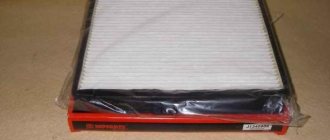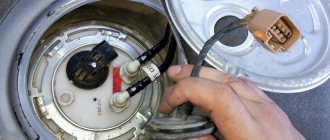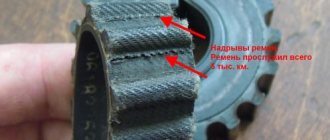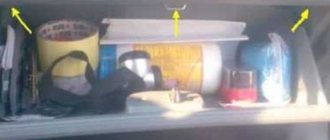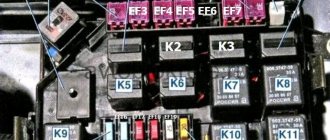The compact passenger car Chevrolet Lacetti is produced by the South Korean concern GM Daewoo. On the territory of the Russian Federation, this vehicle is gaining significant popularity due to the combination of affordable price and unsurpassed quality. If you promptly take care of the components of the Chevrolet Lacetti, the car will last a long time. However, a car owner should know how to properly care for his own car. In particular, you should know the intricacies of such an important procedure as replacing the timing belt.
But when is it necessary to replace the tape in the gas distribution mechanism? What tools are needed for this purpose? Is it possible to replace the timing belt on a Chevrolet Lacetti yourself, or do you need to contact a service station? How is the replacement carried out according to the instructions? What is the frequency of replacing the timing belt in a Chevrolet Lacetti? You can find answers to each of the questions presented above in the current article.
When to change the timing belt?
In accordance with the regulations for replacing the timing belt in the Chevrolet Lacetti, this procedure is included in the list of mandatory measures to maintain the car in working condition. The official replacement frequency is once every 4 years. This corresponds to 60,000 - 75,000 km. However, due to the possibility of accelerated wear of the timing belt in the Chevrolet Lacetti, in practice replacement is carried out much more often. The reasons for the need for premature renewal of the unit are the following circumstances:
- Excessive use of the vehicle;
- Extreme driving;
- Additional load on the Chevrolet Lacetti (for example, a trailer);
- Unsatisfactory quality of road surface;
- Operation of Chevrolet Lacetti at extremely high temperatures;
- Increased hilliness of the area;
- Initially low-quality consumables.
Whatever the negative factor affecting the operation of the Chevrolet Lacetti systems, the car owner needs to pay attention to the following signs of the need to replace the timing belt:
- Strong vibrations in the power mechanism of the car when starting it; Noises while driving;
- Thick exhaust of black or dirty gray color;
- Complications when starting a Chevrolet Lacetti engine - decreased power, jerky movement, inability to start the engine, etc.;
- If you examine the timing belt itself, you can find cracks, chips, depressions and scratches on its surface. Particularly dangerous are abrasions on the gear part of the unit;
- Abrasion on the inside indicates a risk of collision between Chevrolet Lacetti pistons and engine valves;
- Problems with the pump (water pump) of the vehicle.
The listed dysfunctions may be a consequence of timing belt wear. If this breakdown is not noticed in a timely manner, the most important mechanisms of the Chevrolet Lacetti, including the engine itself, may fail. To avoid this, it is recommended to check the condition of the timing belt at least once every 45 kilometers.
Replacing and adjusting the tension of the alternator belt and power steering pump
How often should you change the belt?
The manufacturer recommends changing the alternator belt every 60,000 km or 6 years of operation.
Checking the belt
Check the condition of the drive belts and their tension every 25 thousand km.
• Check the belt for signs of shine or cracks. A shiny belt will slip, while a good belt will have a faintly visible factory texture. Cracks usually start at the inside corner and spread outward. Replace the belt if the belt shows signs of cracking or is highly shiny.
• The belt tension should be without gaps or sagging. When pressing with your thumb on the belt in the middle of the two pulleys, a belt deflection of 8 mm is allowed. If any of the belts flex more than this amount, the belt tension should be adjusted. Incorrect tension will cause slippage and wear; excessive tension will cause bearing failure, belt cracking and chafing.
Typical belt problems
Cracking and erosion. There are deep cracks on the belt that cause kinks. Too much bending leads to overheating and premature wear. Cracks may be the result of using the wrong size belt on a pulley. The belt notch is designed for a smaller diameter pulley.
Softening (oiling). Oil and grease on the belt cause the material to soften and separate from the cord that strengthens the belt. The belt first slips, then fails altogether.
Shine. The shine is the result of belt slippage. A slipping belt can lead to undercharging of the battery, overheating, or poor performance of other systems. The more the belt slips, the more shine there will be on the surface of the belt. If the shine is not strong, tighten the belt.
Worn surface. The surface of the belt is worn and flaking. The belt cord begins to break down, causing the belt to break. If the belt surface deteriorates quickly or becomes nicked, check the pulley groove for nicks.
Delamination. This belt is on the verge of breaking and twisting. The belt layers separate and the belt cord breaks. You should not wait until the rupture is complete.
Wear of V-belts
V-shaped belts are very important for the engine - they drive various units. They require little maintenance (occasional tightening), but they don't last forever.
A slipping or damaged belt will cause the engine to overheat and also cause a whistling noise.
Removal and installation
You will need two 12mm wrenches.
2. Slightly loosen the bolt securing the generator to the tension bar...
3. ...and two nuts of bolts securing the generator to the engine cylinder block (photo taken from below for clarity)
4. Slide the generator towards the cylinder block. This will loosen the belt tension.
5. Remove the belt
6. Install a new alternator belt and adjust its tension.
7. Reinstall the air conditioning compressor belt.
Adjusting the tension of the generator and power steering belts
When pressed with a force of 100 N (10 kgf), the belt deflection should be 10–15 mm.
Control the tension with your thumb.
To adjust the tension of the generator drive belt, loosen the joint and the generator mounting bolts.
And
Using a wooden hammer handle, a stick or even a pry bar as leverage, turn the generator one way or the other until the desired tension (10 - 15 mm) is achieved.
Carefully tighten the mounting bolts. If a new belt was installed, check the tension again after 300 km
Tools
To successfully replace the timing belt on a Chevrolet Lacetti, thorough preparatory measures will be required. First of all, it is important to prepare the necessary tools and spare parts, namely:
- New timing belt;
- Sets of wrenches and screwdrivers;
- Jack;
- Gaskets, seals and rollers (if it is necessary to replace these parts);
- Clean rags or household synthetic wipes for wiping the elements of the Chevrolet Lacetti system from dust or dirt contamination;
- Latch.
It is recommended to place the Chevrolet Lacetti car itself on an overpass or other flat horizontal surface. For work on replacing the timing belt, a garage inspection pit is also suitable, provided there is a lift.
Important to consider! The procedure for replacing a timing belt is one of the most complex processes from the point of view of auto mechanics, so in most cases it is carried out at accredited Technical Service Stations. However, in cases where the car owner is sufficiently experienced or has a technical education, he can replace the unit in the gas distribution mechanism himself.
Belt functions
One of the most important parts of the gas distribution mechanism is the belt. Its task is to synchronize the operation of the shafts: camshaft and crankshaft. With its help, torque is transmitted from the crankshaft to the camshaft. This ensures the distribution of fuel and air in the engine cylinders. Violation of the valve timing leads to the risk of valves meeting the pistons and breakdown of the power unit.
The timing belt is a rubber hoop. On the inside of the product there are teeth, which are necessary to avoid slipping on the pulleys.
New timing belt for Chevrolet Lacetti
The quality of the strap determines its service life. If defects are found on the belt, it must be changed urgently, since if it breaks, the synchronization of the shafts disappears. In this case, the piston meets the valve and bends it. In addition, the cylinder walls may be scratched. All this entails expensive repairs, in which it will be necessary to change the valves or even completely replace the unit.
Bent valves due to timing belt break
The need to replace consumables can be determined by the following signs:
- the engine is malfunctioning;
- power decreases;
- the motor overheats;
- fuel consumption increases.
If these signs are detected, you should not wait for the belt to break, which could cause the valves to bend, but you should carry out a technical inspection of the gas distribution mechanism and perform all necessary replacements of consumables.
Self-replacement of the timing belt on a Chevrolet Lacetti 1.6
In accordance with the step-by-step instructions for replacing the timing belt on a Chevrolet Lacetti 1.6, the sequence of actions of the car owner should be as follows:
- The terminal is removed from the Chevrolet Lacetti battery. This is necessary in order to de-energize the vehicle;
- The housing of the air filter element is dismantled;
- Using a 10mm wrench, unscrew the filter mounting box;
- The next step is to remove the Chevrolet Lacetti timing belt;
- The antifreeze supply hose is unscrewed. This element is located on the top plate of the timing mechanism holder;
- The bolts holding the plate are unscrewed using a 17 key. After this, the clamps are removed and the plate itself is dismantled;
- The pulley is dismantled. To avoid rotation of the Chevrolet Lacetti crankshaft, it is recommended to start fifth gear and depress the brake pedal;
- The alignment of the marks on the camshafts is checked;
- Using a 10mm wrench, unscrew the bolts of the protective timing cover and remove it;
- The bracket holding the engine cushion is removed. To do this you will need a 14 key;
- The tension of the timing belt is released and the timing belt is removed. Important! To avoid antifreeze leakage, the fastening bolts are not completely unscrewed, but only slightly loosened;
- Using a 41 key, turn the pump counterclockwise. If you don't have a suitable wrench, you can use pliers. Only after this can the timing belt be finally removed;
- If necessary, the rollers, tension mechanism and other additional units of the Chevrolet Lacetti system are replaced;
- A new timing belt is installed, after which the pulley and belt tension in the Chevrolet Lacetti are checked;
- The above procedure is repeated in reverse order.
This is how you can replace the timing belt on a Chevrolet Lacetti 1.6 yourself. After it is carried out, it is necessary to check the condition of the Chevrolet Lacetti engine. To do this, the engine starts for 5-10 minutes. If during the run no extraneous noises are heard, no tremor is felt and no problems arise when starting the mechanism, then the event has been completed successfully.
Replacing the timing belt on Chevrolet Lacetti 1.4 and 1.8
The basic principles of the procedure for replacing a gas distribution mechanism unit in a passenger car of a certain brand do not depend on the engine modification. Thus, on the Chevrolet Lacetti 1.4, the timing belt is replaced accordingly. The same can be said about the modification of the 1.8 engine. Additional information is indicated in the operating manual attached to each individual vehicle.
Tips and tricks
On vehicles with a timing belt, it is strongly recommended not to limit yourself to replacing just one belt. At the same time, new rollers should be installed. Ignoring this rule may lead to subsequent jamming of the rollers and breakage of the new timing belt.
Also, after installation on old rollers, the new belt may slip and accelerate wear. Even if the engine starts normally, you may encounter noticeably increased noise during engine operation.
Let us also add that, structurally, the timing belt can also drive the pump (water pump of the cooling system). During replacement, you should separately check the condition of this element, and also change the pump strictly according to the regulations. If the water pump jams, then the belt may also break.
Also, a frequent situation when, after replacing the timing chain, the engine does not start or problems arose after installing the timing belt, is the need to check the DPKV and DPPV. In this case, all the marks may be set correctly, fuel is supplied to the cylinders, but there may be no spark, a “check” light is on the dashboard, etc.
This suggests that during the work the contact chip for some sensor could have been damaged. To accurately determine the cause, the engine can be scanned for errors using a special OBD2 scanner.
When selecting belts and rollers, it is necessary to install high-quality analogues or original parts. You can purchase spare parts either as a ready-made installation kit or separately. Remember, low-grade counterfeits of ready-made timing belt installation kits from well-known companies Gates, Inna, etc. may be found on sale.
Finally, we note that replacing the timing mechanism drive is rightly considered a responsible procedure. Incorrect installation can lead to engine failure or unstable operation of the power unit. If you are not confident in your abilities, then it is better to entrust this procedure to experienced car service specialists.
Consequences of untimely replacement
The consequences of untimely replacement of the timing belt in a Chevrolet Lacetti may be as follows:
- Bent engine valves as a result of a broken drive belt;
- Breakdown of piston heads by valves;
- Damage to cylinder walls and valve seats.
The problem is that usually the timing belt, as a result of wear or mechanical damage, can fail at high speed. To avoid this dangerous situation, it is necessary to observe the periodicity of updating this unit.
Service replacement price
Of course, if you need to replace the belt, you can turn to the help of professionals, but their services cost from 3 to 5,000 rubles. But the main thing, of course, is not this. By making repairs with his own hands, the car enthusiast gains a skill that will definitely be useful to him in the future. Before repairs, you should visit the store and buy new consumables there, which, in addition to the belt, also include a tension roller, since it is also better to replace it along with the belt. The price of a belt drive kit can vary from 4 to 6,000 rubles. There is no need to save money here; it is better to buy a high-quality consumable that will last longer than a cheaper one. It is possible that you will also have to replace the water pump. You shouldn’t buy it right away, but during repairs you should definitely evaluate its condition, and if there are visible damages, it’s better to buy a new one. A faulty pump can cause engine damage.
